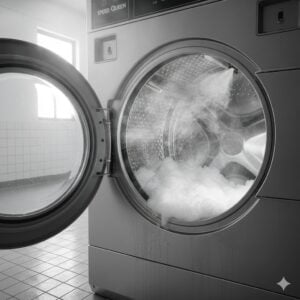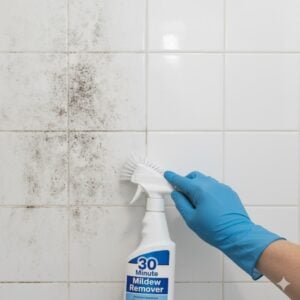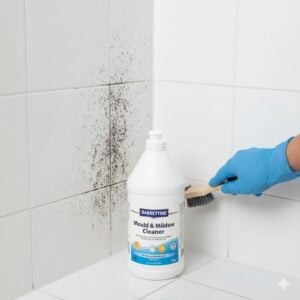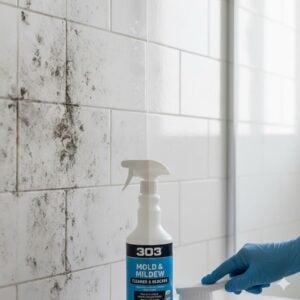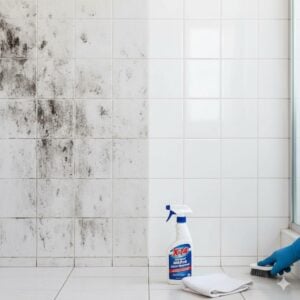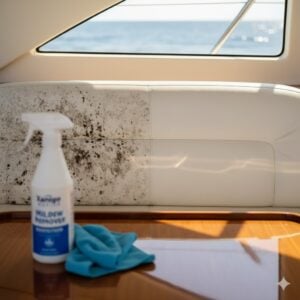If you’ve ever walked past a sewage lift station and caught a strong, foul smell in the air, you’re not alone. These odors are more than just unpleasant—they can affect daily comfort, public health, and even property values. That’s where an odor control unit for lift station comes in. Whether you manage a residential compound, commercial facility, or municipal site in the UAE, understanding how these systems work can help you maintain cleaner air around critical infrastructure.
Table of Contents
Toggle1. What Is an Odor Control Unit for Lift Stations?
Let’s start with the basics. A lift station is a vital part of the wastewater system. It helps transport sewage from lower to higher elevations through pumps—especially in places where gravity flow isn’t enough. These stations are often located near residential areas, parks, or commercial buildings, and unfortunately, they can emit strong smells from the gases that accumulate inside.
An odor control unit is a specially designed system that neutralizes or removes these gases—primarily hydrogen sulfide (H₂S), ammonia, and other volatile organic compounds (VOCs)—before they’re released into the environment. These systems work by treating the air through different filtration or chemical processes, ensuring the air that exits the lift station is clean and safe to breathe.
Without such a unit, the smell can travel far, especially on windy or humid days. And in cities like Dubai or Sharjah where urban density is high, that can lead to complaints, regulatory violations, or health concerns.
2. Why Odor Control in Lift Stations Matters in the UAE
Here in the UAE, heat plays a big role in making odors worse. When temperatures rise—especially in the summer—the gases inside a lift station become more volatile and spread faster into the surrounding area. That means the same system that might seem “okay” in winter becomes a major nuisance come July.
Odors from lift stations aren’t just a nose-level annoyance. They can cause headaches, nausea, and in extreme cases, respiratory irritation. For residential communities or hotels nearby, it’s a serious comfort and reputation issue. For municipalities, failing to manage these odors can lead to public complaints and even fines under environmental health laws.
Many UAE cities have already begun integrating odor control solutions into new wastewater infrastructure, especially in fast-developing zones like Reem Island (Abu Dhabi) and Dubai South. But older areas may still rely on outdated or minimal filtration. If you manage such a site, upgrading your odor control system can bring immediate results—in both air quality and resident satisfaction.
3. Types of Odor Control Units and How They Work
Not all odor control units are built the same. Depending on the location, size of the lift station, and severity of the odor, you’ll find different technologies in use. Let’s break down the most common ones so you know what’s available—and what might work best for your needs.
1. Activated Carbon Filters
These are among the most popular solutions, especially for smaller or mid-sized installations. They use highly porous carbon material to trap odor-causing molecules. They’re low-maintenance and cost-effective, but require regular replacement of the carbon media.
2. Chemical Scrubbers
This system uses a wet chemical process, often involving chlorine dioxide or sodium hydroxide, to neutralize gases. It’s ideal for high-load odor environments but requires chemical handling and routine checks to ensure safety and performance.
3. Biofilters
Biofilters use living microorganisms to “digest” odor-causing compounds naturally. Air is passed through a media bed (often compost or synthetic fibers) that supports microbial life. It’s eco-friendly and suitable for consistent odors, but needs careful humidity and pH control.
4. Ozone or UV-Based Systems
These advanced systems use oxidation to destroy odor molecules at a chemical level. They are very effective and often compact, making them ideal for urban setups, but they tend to be more expensive and require professional installation.
Each system has its strengths. If you’re unsure which is right for your lift station, don’t worry—we can help evaluate your site and recommend the most effective option based on location, air flow, and odor intensity.
4. Installation and Maintenance Considerations
Installing an odor control unit isn’t just about placing a machine next to a lift station. It’s about making sure it fits into your site’s operation smoothly. For outdoor setups, you’ll need a weather-resistant enclosure. For indoor setups, ventilation and access points must be carefully managed.
During installation, trained technicians typically:
- Inspect the lift station and measure air flow and odor concentration.
- Recommend placement of air intake and exhaust points.
- Install ducting, fans, and the unit itself with minimal disruption to operations.
Once installed, maintenance is key. A common mistake is “set it and forget it,” which causes filters to clog or systems to lose effectiveness. Regular inspections (monthly or quarterly) and timely replacement of media or chemicals are essential.
In the UAE, where sand, humidity, and heat can affect mechanical systems, routine service ensures your unit performs optimally all year round. A poorly maintained unit won’t just fail to eliminate smells—it might spread them further.
Need help with installation or maintenance planning? Just click the contact button on the right-middle of this post. We’re happy to walk you through the process with zero pressure.
5. Cost and Choosing the Right System
One of the most common questions we get is, “How much does an odor control unit for a lift station actually cost?” And honestly, the answer depends on a few key factors:
- Size of the lift station: Larger systems require bigger units with higher airflow capacity.
- Type of unit: Activated carbon units tend to be more affordable, while ozone or biofilter systems may have higher initial costs but lower operational costs.
- Odor severity: Stronger odors need more robust treatment methods.
- Installation environment: Outdoor or harsh environments may require special housing or protection.
As a rough guide, here’s a ballpark range:
| System Type | Estimated Cost (AED) |
|---|---|
| Activated Carbon Unit (small to mid size) | 2,000 – 8,000+ |
| Biofilter or Scrubber System | 10,000 – 30,000+ |
| Ozone/UV Advanced Unit | 15,000 – 50,000+ |
That said, we don’t believe in one-size-fits-all pricing. At Bio-On UAE, we prefer to assess your specific situation and recommend solutions that make sense for your budget and environment. Whether you’re a municipality or a private facility, our goal is to help you get the clean air solution you need—without overspending.
If you want a quick, honest recommendation based on your site, just click the contact button on the right-middle of this post. We’ll take care of the rest.
Conclusion
Dealing with bad odors from a lift station doesn’t have to be complicated—or expensive. With the right odor control unit for lift station in place, you can dramatically improve the environment around your property, keep residents happy, and stay compliant with hygiene standards.
We know that every site in the UAE has its own challenges—from temperature extremes to tight space constraints. That’s why we’re here to help you find a system that fits just right. If you’re ready to take the next step, click the contact button on the right-middle of this post and let’s discuss your options.
At Bio-On, we don’t just eliminate odors—we protect air quality, public health, and your peace of mind.








